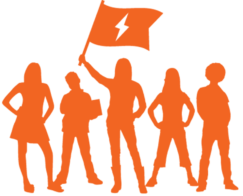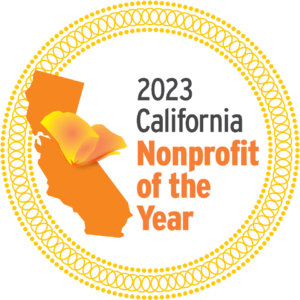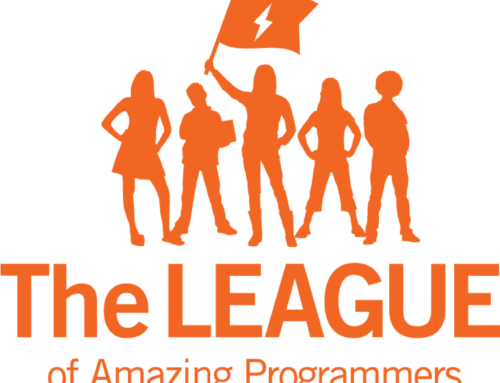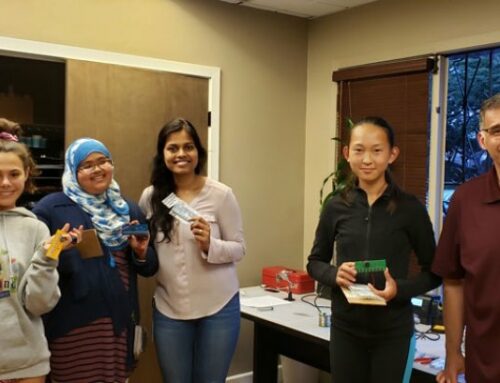Understandably, the sudden urgency and severity of the COVID-19 outbreak has been a total shock for us all. Prior to the crisis, The League had 11 locations, dozens of staff and volunteer teachers, and around 500 students all throughout San Diego county. Our students were taking in-person programming classes 7 days a week and we were faced with a huge question: How can we fully and rapidly transition to online classes and maintain the same caliber of instruction as our in-person classes that all of our students have come to expect?
Executive Director, Sarah Cooper, said ”We have always thought of ourselves as being a ‘growth mindset’ organization. Well, this event has totally pivoted us into living that value out loud!”
Based on the increasingly worrying news, staff had begun discussing going online as a far off possibility on March 9th, but as things evolved, it became more and more obvious that distance learning would be the ONLY way to keep our classes running. Realizing the risk and the responsibility we had to our community, we decided to act fast. Our Amazing Teachers came together on extremely short notice and devised a game plan in 24 hours, finalizing things just 30 minutes before the first online class was scheduled to start!
A big part of what the students enjoy about being in The League is working in a small group and having the teacher right there to guide them. Whether working independently or in a collaborative project, it feels good to gather with your tribe, others who understand what you are working on and can crack a joke about the same things. However, the fact is, our classes are inherently online; all the material is online and everything the kids do is on the computer.
So, how were we going to replicate the human interaction and pedagogic elements in an online environment – that was a key problem. We discussed this down to small details, like having teachers perform a check-in process like pilots, acknowledging each student and testing the audio and video connection. Teachers have the ability to show their own screens or take remote control of the student’s screens. And where a student is having an issue they don’t want to explain to the whole group they can message the teacher a question. It’s not ideal yet, but we are ticketing each issue that comes up to make sure the troubleshooting solutions get disseminated across the whole community.
As luck would have it, we already serve a few students who cannot join in person, and last year our Director of Education, Keith Groves, and our Executive Director, Sarah Cooper, had attended the OpenEdX conference, coming back with innovative ideas about teaching and learning online. Since then, the teachers with help from some stellar volunteer programmers have been developing a League learning management system (LMS) for roll-out in the next academic year. This meant that the groundwork was already laid for structuring the curriculum to be remotely delivered, and Keith was able to guide the entire school to being fully online in just 24 hours time. “It was an all hands on deck situation and seeing the teachers, volunteers, and staff pull together was truly inspiring,” said Keith.
Of course, we couldn’t have pulled off this amazing feat without the use of technology. We knew that most of our students had computers at home, and we wanted to ensure that our curriculum was compatible with any computer. Specifically, we used the following programs to stay in constant contact with each other and our students:
- Zoom – online classrooms & staff meetings (you probably live here now!)
- Our online environments hosted on AWS so any student can join in
- Discord – to text and chat with students during class
- Remind – to connect with families via email and text
Internally, we use the following services to stay on track:
- Pike 13 – scheduling and client account management
- Jostle – our staff and volunteer intranet
- Slack – the staff communications hub
The next stage for us, now that things are more or less running smoothly, is to turn our attention to ensuring that those students who don’t have a suitable computer at home, or easy access to Wifi, are not left out. We put out a call to the League community for laptop loans/donations, which started coming in immediately, and we are working with our community partners to solve WiFi-access inequities.
In these uncertain times, we are so fortunate to have our wonderful community of students, parents, volunteers, and partners. It is everyone’s support that gives The League the ability to continue being there for our students through thick and thin and help them prepare for exciting careers in programming and technology.
Article originally published at: https://www.linkedin.com/pulse/how-our-coding-school-transitioned-fully-distance-24-tuakli-cooper






